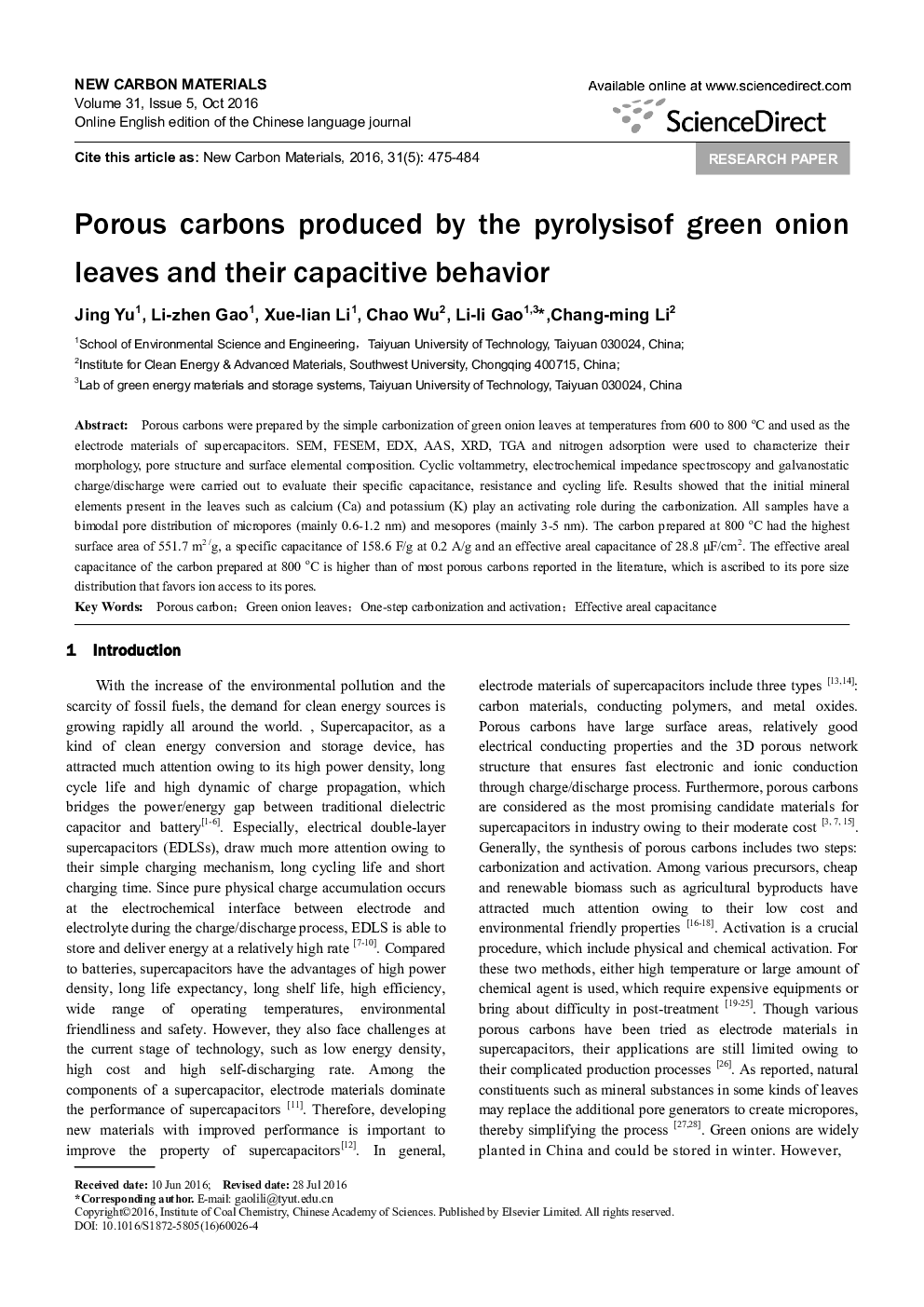| Article ID | Journal | Published Year | Pages | File Type |
|---|---|---|---|---|
| 7954400 | New Carbon Materials | 2016 | 9 Pages |
Abstract
Porous carbons were prepared by the simple carbonization of green onion leaves at temperatures from 600 to 800 °C and used as the electrode materials of supercapacitors. SEM, FESEM, EDX, AAS, XRD, TGA and nitrogen adsorption were used to characterize their morphology, pore structure and surface elemental composition. Cyclic voltammetry, electrochemical impedance spectroscopy and galvanostatic charge/discharge were carried out to evaluate their specific capacitance, resistance and cycling life. Results showed that the initial mineral elements present in the leaves such as calcium (Ca) and potassium (K) play an activating role during the carbonization. All samples have a bimodal pore distribution of micropores (mainly 0.6-1.2 nm) and mesopores (mainly 3-5 nm). The carbon prepared at 800 °C had the highest surface area of 551.7 m2 /g, a specific capacitance of 158.6 F/g at 0.2 A/g and an effective areal capacitance of 28.8 μF/cm2. The effective areal capacitance of the carbon prepared at 800 °C is higher than of most porous carbons reported in the literature, which is ascribed to its pore size distribution that favors ion access to its pores.
Keywords
Related Topics
Physical Sciences and Engineering
Materials Science
Materials Chemistry
Authors
Jing Yu, Li-zhen Gao, Xue-lian Li, Chao Wu, Li-li Gao, Chang-ming Li,
